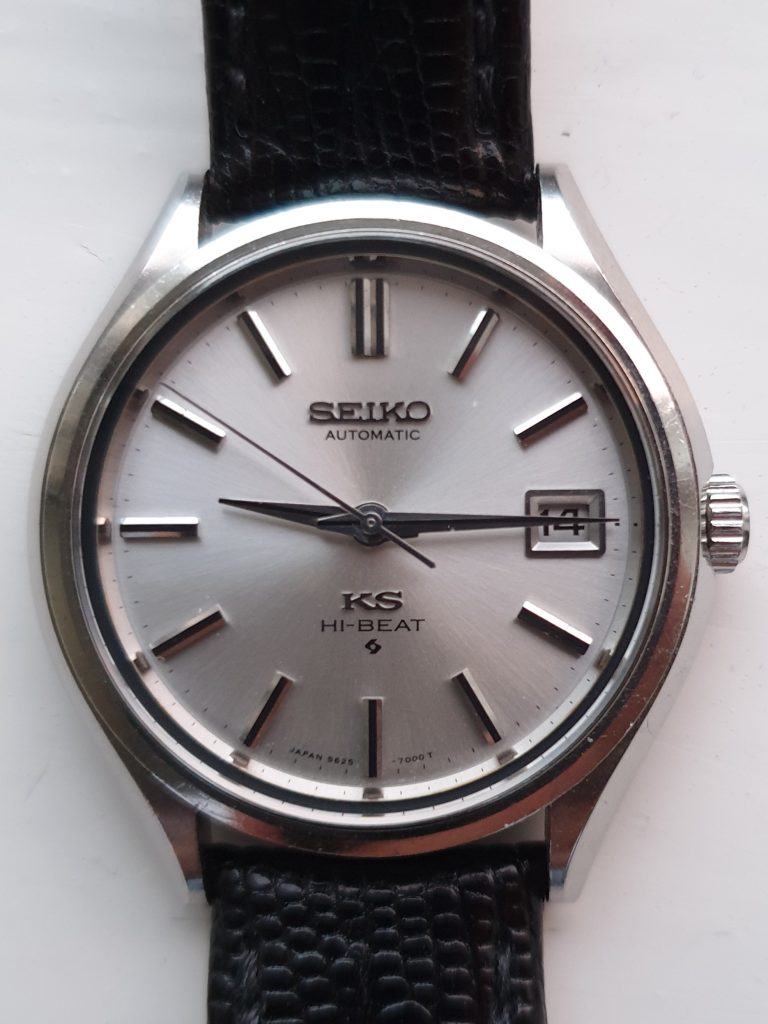| Brand | Seiko |
| Model | King Seiko Hi-beat 5625-7120 |
| Year | 1971 |
| Caliber | Cal 5625A Case nr 190747 |
| Details | Size 37/1x/18 (w/h/lug) Glass replaced may 19′ (org.) |
| Links | King Seko blog Article with same model |
| Search | dba.dk / “King Seiko” |
Many watch collectors will no doubt be well aware of the Grand Seiko range of watches today. The first Grand Seiko was launched in 1960 by Suwa, while Daini launched their equivalent, the King Seiko in 1963.
Seiko brand watches were originally produced by two different Seiko Corp. subsidiaries. One was Daini Seikosha Co, Ltd (Kameido,Koto-ku, Tokyo) and the other was Suwa Seikosha Co (Suwa-shi, Nagano). Two different companies produced one brand in order to improve technology through severe competition and to hedge the risk. Splendid watches were produced at both companies because of this tough competition and this system proved efficient at hedging the risk. If either company experienced production problems the other company could compensate by increasing production. Eventually Daini Seikosha Co, Ltd. changed its company name to Seiko Instruments Inc. and Suwa Seikosha Co, to Seiko Epson Corporation.
However it is important to note that during the 1960s/1970s, Suwa and Daini were rival companies. Hence, both Grand Seiko and the King Seiko were the pinnacles of the 2 Seiko companies available to the public at that time.
Although the Grand Seiko was officially resurrected in 1998, the same cannot be said for the King Seiko. It seems to confirm that the Grand Seiko and King Seiko were probably much closer competitors in the 60s and 70s than originally given credit for. As such, it will only make sense to offer consumers 1 premium product, rather than 2 of the equivalent quality.
In 1959, Seiko hired a design graduate by the name of Taro Tanaka. One day in 1962 while at Wako, Taro observed that the Swiss watches caught and reflected the lights in the store much better than Seikos. Upon further examination, he realized that the Swiss watch cases consists of perfectly flat and conical surfaces perfectly smooth and free from distortions.
He then created a “design formula ” which became known as Seiko’s “Grammar of Design”. He wanted Seiko watches to sparkle brilliantly when on display and without any distortions.
The rules were:
- Perfectly flat surfaces and angles for cases, dials, hands, indexes
- Two Dimensional faceted curves for the bezel
- All distortion should be eliminated from the dial, hands, indexes and case, the finishing of the dial and case should be a mirror finish so it shines and sparkles
- No more round cases, a unique case design
